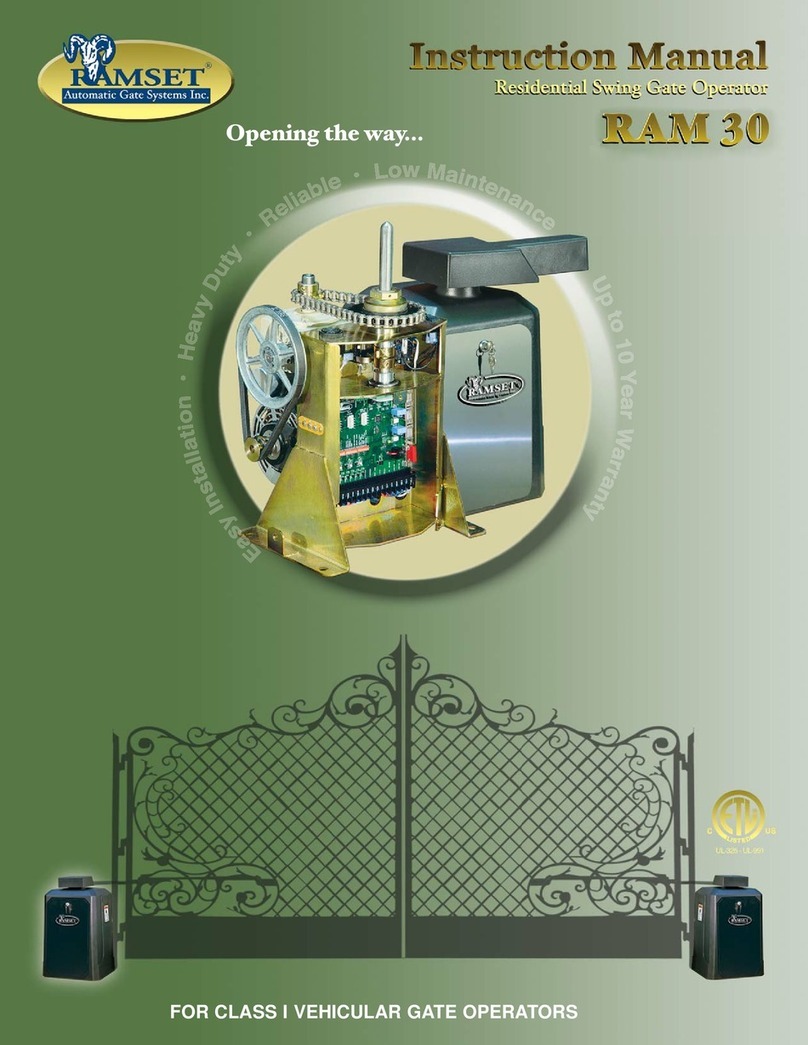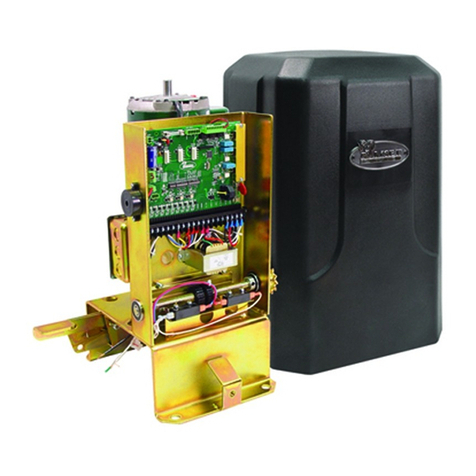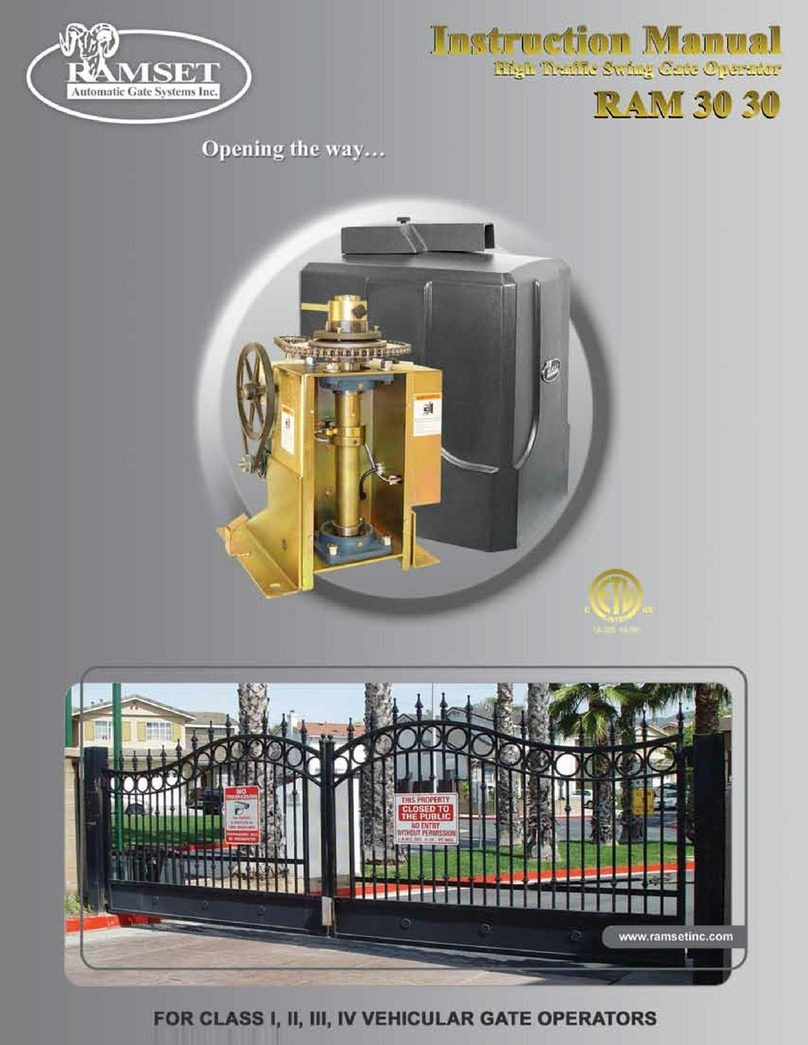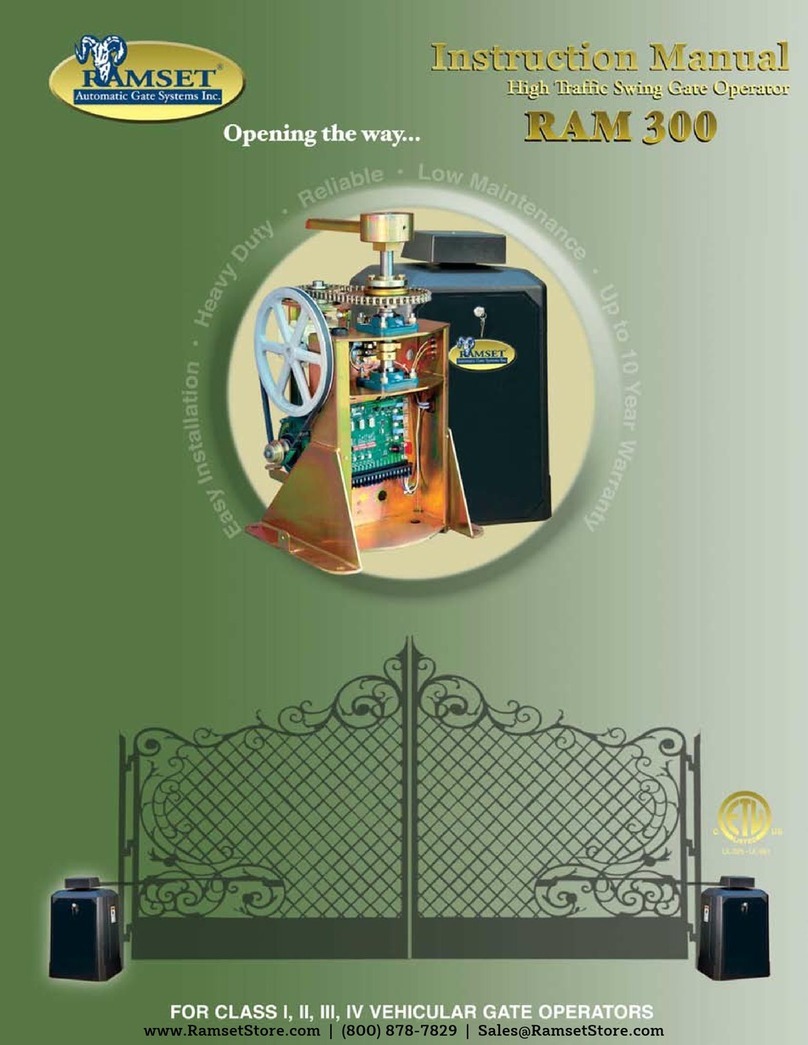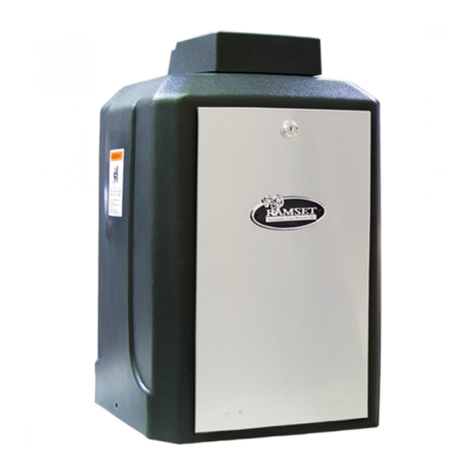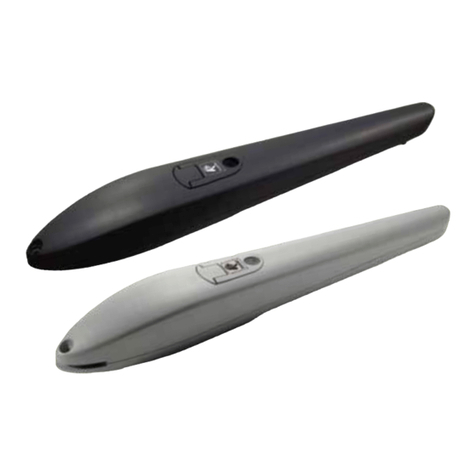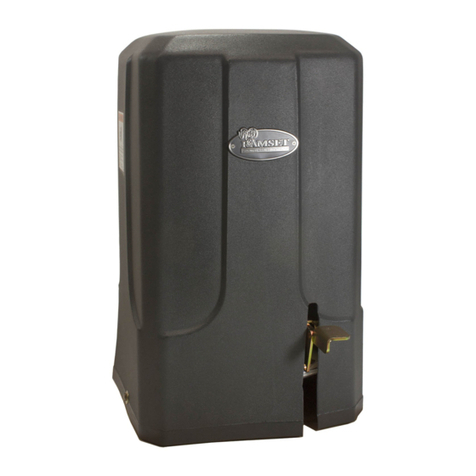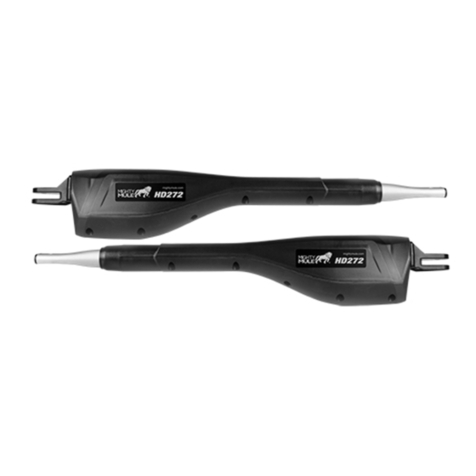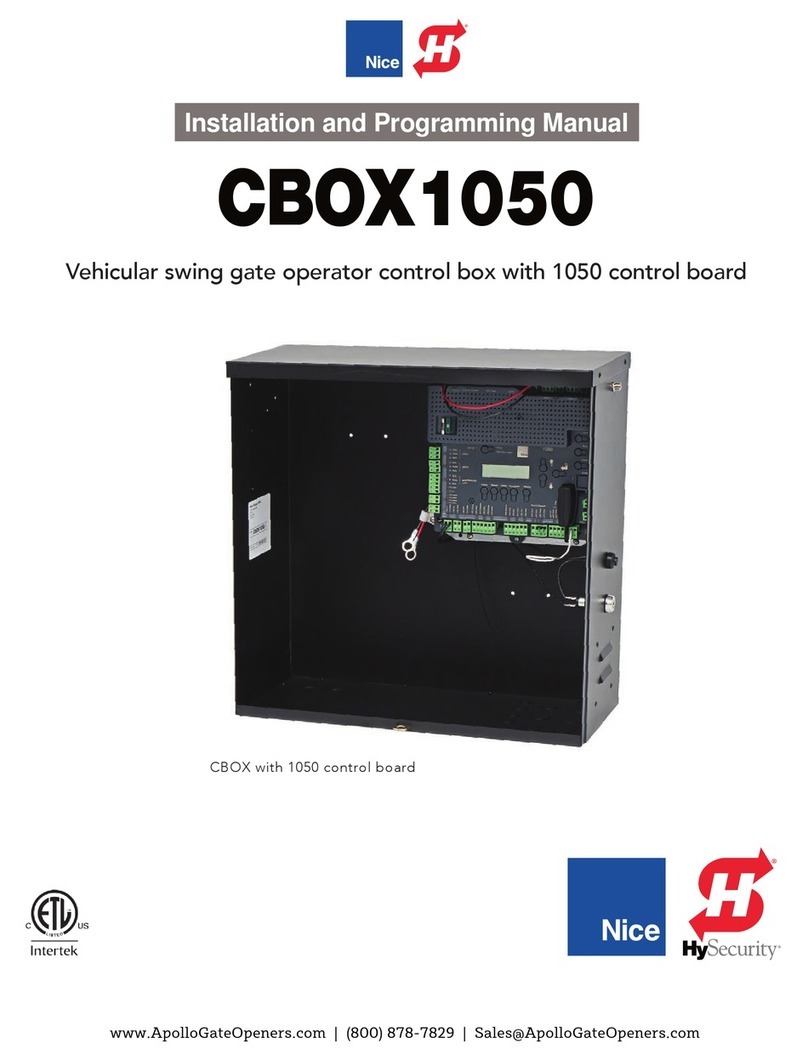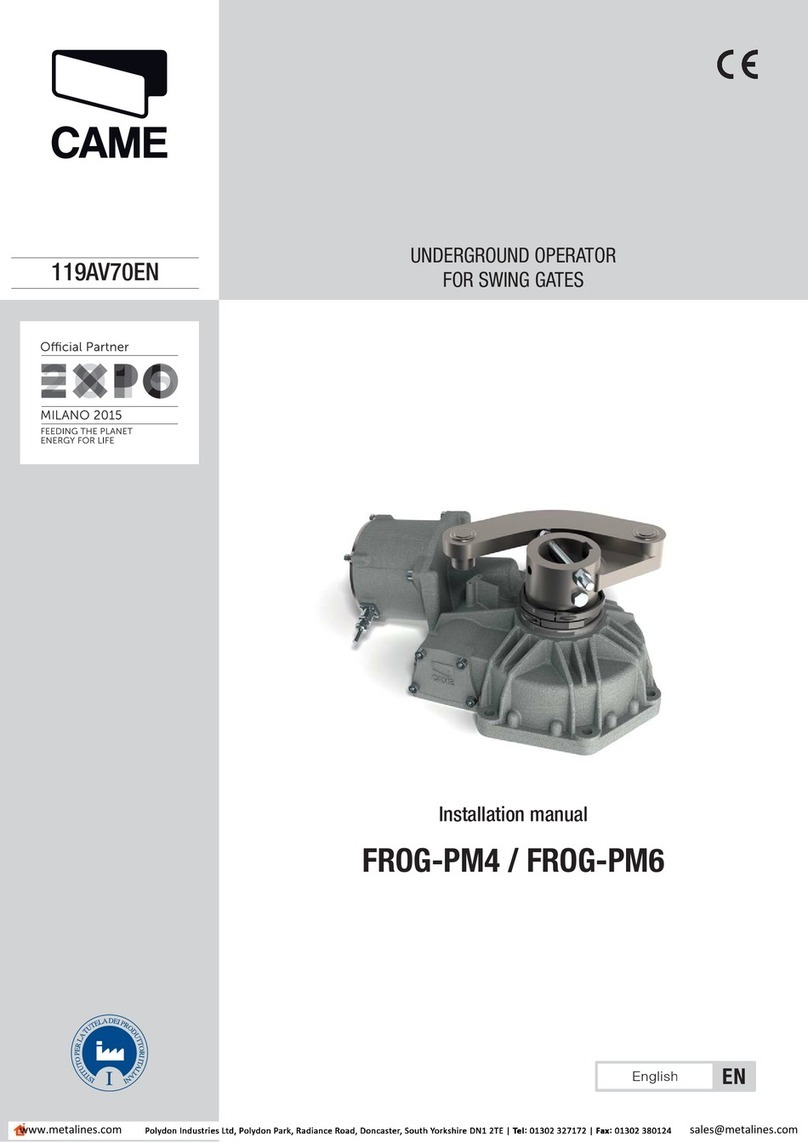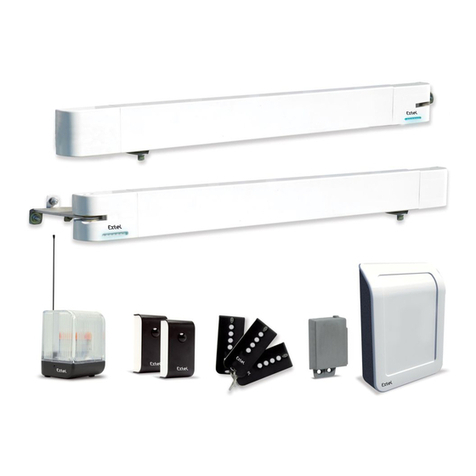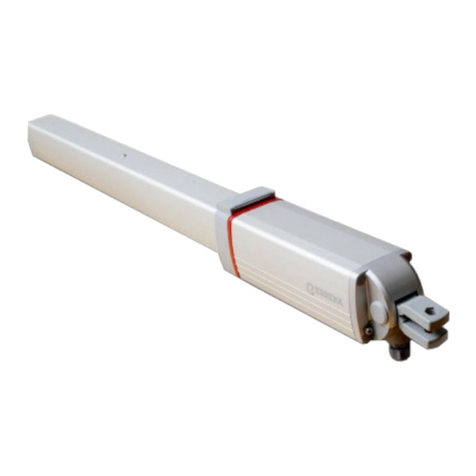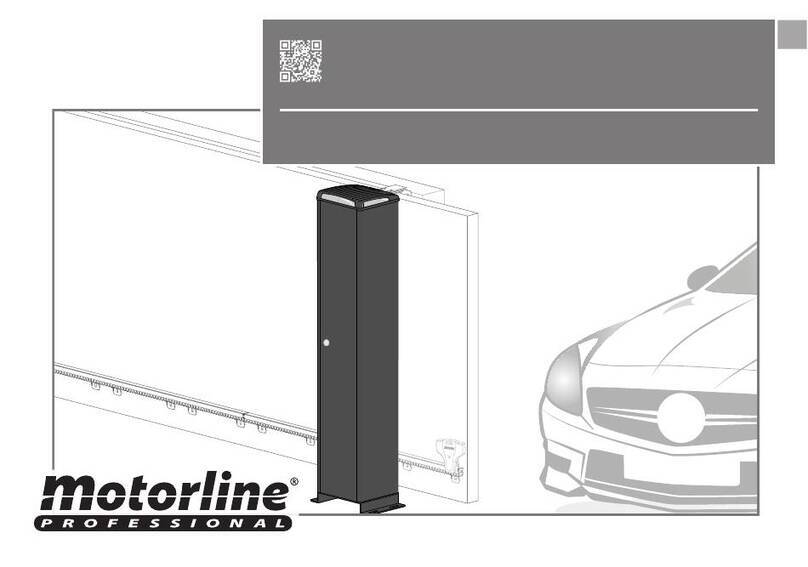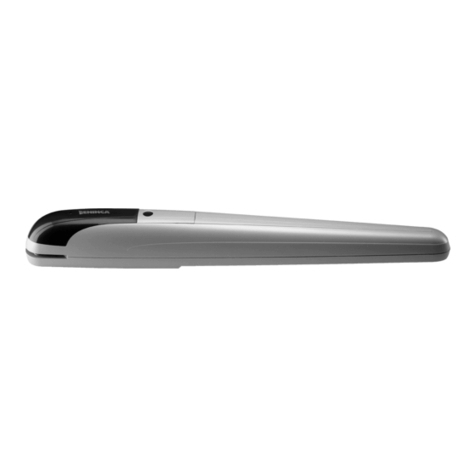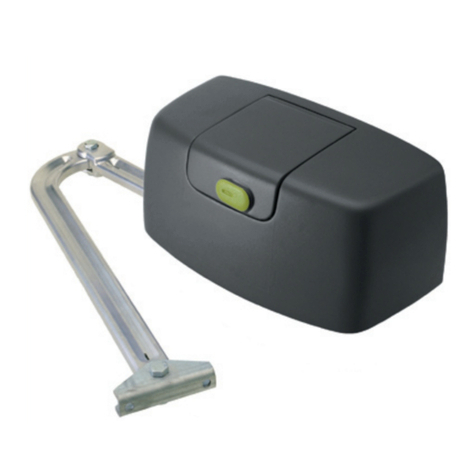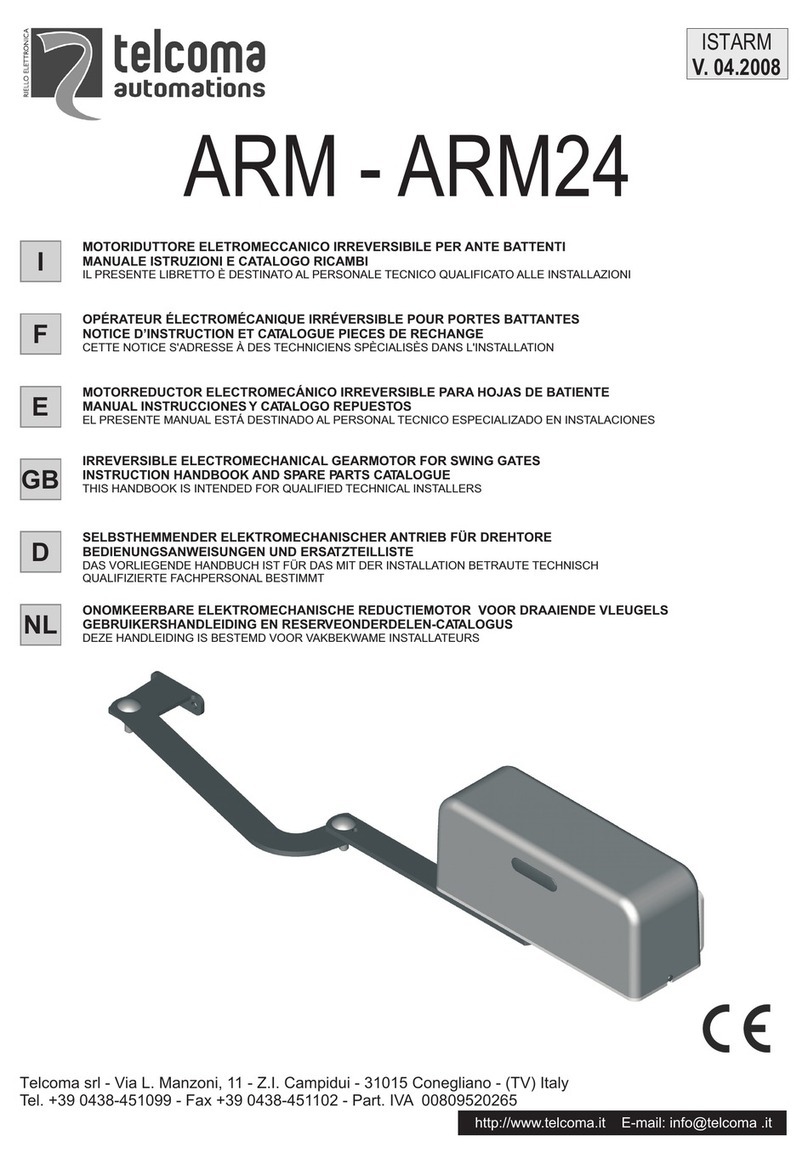
WARNING:
DO NOT INSTALL THIS GATE OPERATOR SYSTEM
UNLESS YOU ARE A TRAINED, EXPERIENCED GATE TECHNICIAN
IMPORTANT SAFETY REQUIREMENTS
• Read, understand & follow the instruction manual
• Never let children operate or play with gate controls. Keep the remote control
away from children.
• Always keep people and objects away from the gate. No one should cress the
path of the moving gate.
•• Test the vehicular gate operator monthly. The gate MUST reverse on contact
with a rigid object or stop when an object activates the non-contact
sensors. After adjusting the limit of travel, retest the vehicular gate
operator. Failure to adjust and retest the vehicular gate operator properly
can increase the risk of injury or death.
• Use the Emergency release only when power switch or circuit breaker has
been turned off. Using the emergency release during a power failure can
be a hazard if power is abruptly restored.
• KEEP GATES PROPERLY MAINTAINED. Read the owner’s manual. Have a
qualified service person make repairs to gate hardware.
• The entrance is for vehicles only. Pedestrians must use separate entrance.
• SAVE THESE INSTUCTIONS.
TABLE OF CONTENTS
1
2-3
4-5
6
7
8
99
10
11
12
13
14-15
16
17-1817-18
19-20
21
22-24
25-26
27
28
2929
Important safety requirements................................................................
Responsibilities of the installer/technician..............................................
Important safety requirementsby UL Standards.....................................
UL gate classification - Electrical Connection - Wire Gauge..................
General specifications............................................................................
Concrete pad location.............................................................................
Installation specifications........................................................................Installation specifications........................................................................
Rail location requirements......................................................................
Case mounting specifications.................................................................
Limit block location..................................................................................
Drive mounting specifications..................................................................
Plug connections.....................................................................................
Push button controls................................................................................
Dip switch configuration...........................................................................Dip switch configuration...........................................................................
Terminal strip connections.......................................................................
Entrapment and safety protection............................................................
Exploded view.........................................................................................
Parts list...................................................................................................
End user’s responsibilities.......................................................................
Emergency release procedure................................................................
Gate entrance warning - Placard safety..................................................Gate entrance warning - Placard safety..................................................
